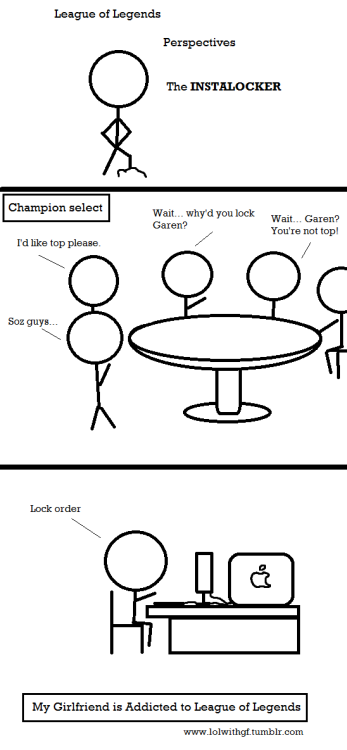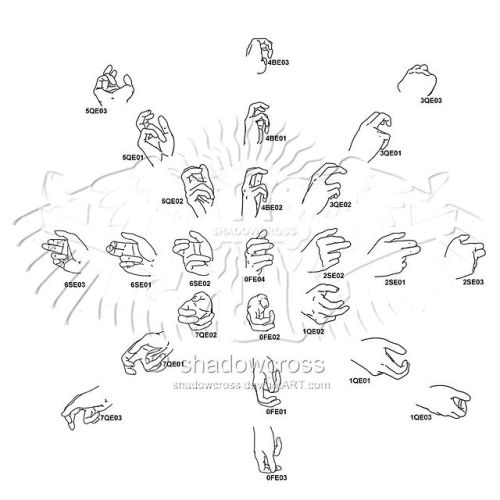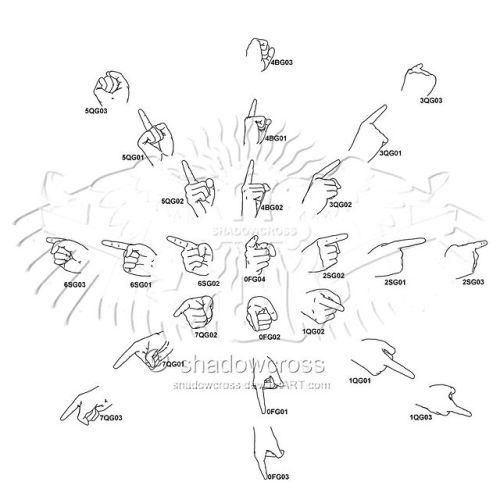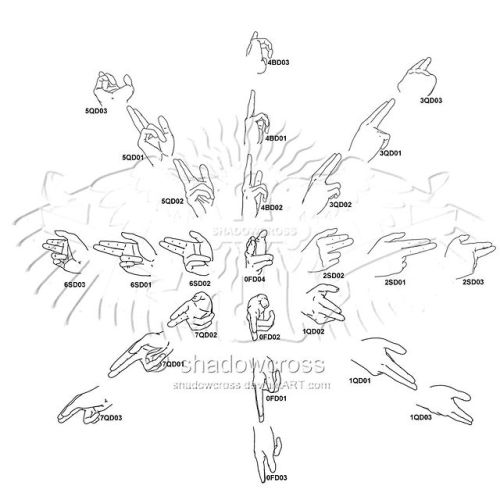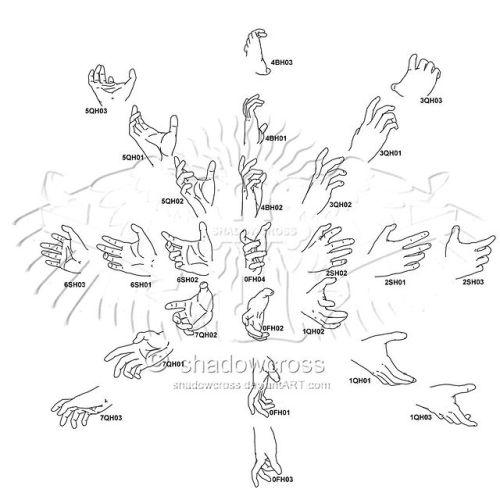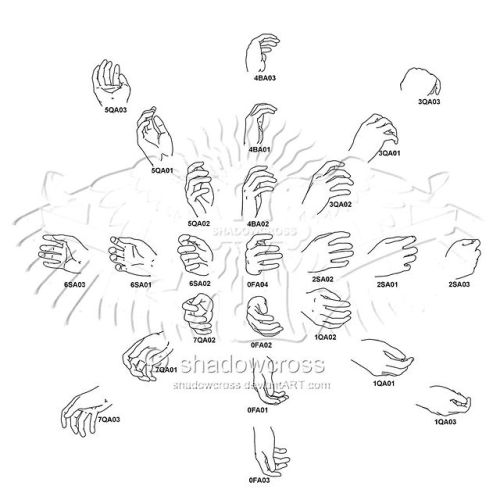#perspectives
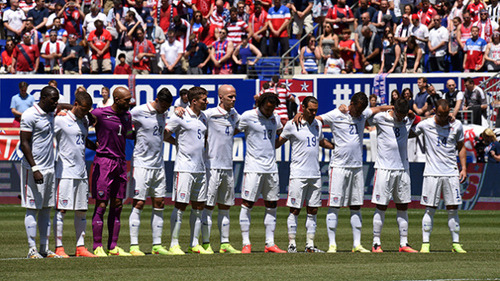
Previewing Team USA, its formidable pool-play opponents and the chances of moving onto the round of 16.
June 16, 2014 marks the start of the World Cup for the US Men’s National Team. This one ain’t going to be easy. If Qatar getting the World Cup in 2022 started speculation that FIFA hated the USA, ensuring the USA’s “random” draw into the deadliest Group of Death ever ended it with a resounding yes.
Just to recap the group: There’s Germany, currently second in the FIFA rankings and a favorite to win. The team is loaded with talent from front to back. Manuel Neuer is one of the best keepers on the planet; captain Phillipp Lahm is a defender/midfielder combo and a catalyst for Bayern Munich’s recent run of success; midfielder Bastain Schweinsteiger’s motor shows no signs of sputtering out as he enters his third World Cup; and the ageless Miroslav Klose sits on the brink of becoming the tournament’s all-time leading scorer.
Next there is Portugal, FIFA’s fourth-ranked team. The joke is that it’s not Portugal, it’s Cristiano Ronaldo and ten other guys. Unfortunately, that’s still a good team. Ronaldo’s backup is led by Pepe, who plays as if he were a Bond villain’s henchman (Given his red-card headbutt in Portugal’s opening match, it seems an apt comparison now more than ever). Joining him are Raul Meireles and Helder Postiga to round out a stable of experienced professionals with just enough left in the tank to make Portugal dangerous.
Lastly, there is the USMNT’s arch nemesis, Ghana. Don’t be fooled by Ghana’s 37th –place ranking. They have knocked the US out of the last two World Cups, and would love nothing more to seal the team’s fate from the start. Ghana don’t have a lot of well-known players, but Michael Essien and Asamoah Gyan command a steady and well-oiled offense. More importantly, their defense allowed just three goals during the qualifying campaign. Ghana are the only team that can’t match the US in talent, but their psychological edge should more than make up for it.
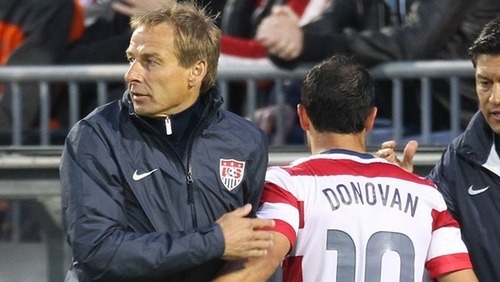
That leaves the odds stacked against this U.S. squad. But the national team is not completely out of it, especially with Jurgen Klinsmann at the helm. The German-born manager brings a total vision for the USMNT that expands beyond this tournament, an uncommon approach given that most are just happy with holding onto their job. As a result, Klinsmann made it clear that no one is safe. He cut all-time leading scorer Landon Donovan prior to the tournament, and raised some eyebrows last summer by tinkering with the US’s lineup. The squad responded with a 12-match winning streak that displayed unprecedented depth. That long bench will be crucial in Brazil, where they will play in arenas alternately described as 1) a rainforest, 2) a microwave oven and 3) Death Valley. Any success the USMNT hope to have will depend on how well they manage the constant rotation of players.
When you look at the 23-man roster, it’s hard to find a player on there that raises any serious doubts as far as skill. What does raise concerns (and why many questioned cutting Donovan) is the team’s overall lack of World Cup experience. The US will lean heavily on keeper Tim Howard, defender DeMarcus Beasley, midfielder Michael Bradley, forward Jozy Altidore and captain Clint Dempsey to provide the poise necessary to push through the group stage. They have all been there before and will need to step up to ensure this young team maximizes its potential.
From a tactical standpoint, the biggest worry is the defense. Howard will certainly keep them organized, but the four in front of him are very young and, at times, undisciplined. Fullback Geoff Cameron will shoulder the bulk of the responsibility as a kind of two-way defenseman, making the crucial decision as to when to help the attack without getting caught too far into the midfield on the counter-attack.
The midfield will go as Michael Bradley goes. He is the rock the attacking foundation is built on, and will be the point man in defending against Portugal and Germany’s quick strikes. Attacking options Mix Diskerud and Graham Zusi will depend on him to feed them the ball, while Jermaine Jones helps Bradley out on the back side.
As for an X factor, Julian Green fits the bill. Green grew up in Germany, and plays for powerhouse Bayern Munich. But when the son of an American father and German mother got the chance to choose his country, he sided with the U.S. That is a coup for Klinsmann, and signals the USMNT’s evolution into a respectable force on the world stage. Green is just 17, and still a work in progress. But he could provide added speed and energy off the bench.
The final grouping are the forwards. For once, the US goes into a World Cup knowing who will supply its goals. Jozy Altidore’s scoring performance in the USMNT’s final tune up game showed that his prior struggles were more a fluke than the norm. Clint Dempsey is perhaps the most reliable player on the squad, and will be counted on the split the defense with well-time passes. And there are even goals on the bench with this squad: Aron Johannsson has shown a nose for the net, and MLS veteran Chris Wondolowski is a pure finisher.
So what does all this mean? In any other year, you could say the USMNT have the talent and tactics to walk out of their group. But this year the draw went against them. It’s going to take a truly special performance and a bit of luck to get to the knockout round. More realistically, a successful campaign would be a win against Ghana and competitive matches with Portugal and Germany.
If you’re an optimist, however, here’s the likely scenario for advancing out of pool play: The US start with a convincing, multiple goal win against Ghana. Then, taking advantage of Cristiano Ronaldo’s supposed leg injury, a win or draw against Portugal. At this point, the US need to root for Germany to have beaten both Portugal and Ghana to secure a spot in the next round. A point then against a German side focused more on resting up would secure second place for the US.
That’s the most likely way to the last 16. But once the matches start, World Cup group stages have a tendency to throw in a few surprises. Starting tonight, we’ll just have to tune in and find out. And in the words of Ian Darke: Go Go USA!
–
Matt Anderson is Began in ‘96’s Richmond correspondent. Find more of his writing at First and Den.
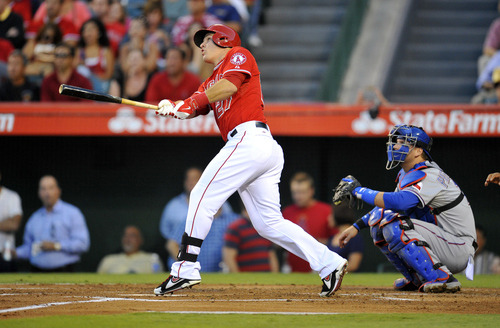
A primer on who’s a contender in 2014, and who isn’t, using Fangraphs WAR.
Through six innings on a sunny Opening Day in New York, the Mets kept it together.
They entered the seventh frame up 4-2 on the Washington Nationals, thanks in large part to a three-run homer from left fielder Andrew Brown. Starter Dillon Gee struck out the first batter, allowed a single, but got the second out on a fielder’s choice.
And then, disaster.
Gee allowed a run. Reliever Carlos Torres replaced him and walked the only batter he faced. Scott Rice then spelled him and walked the only batter he faced. By the time his replacement, Jose Valverde, recorded the final out, the score was tied at 4.
Which, in the end, didn’t look so bad after three different Mets relievers managed to blow the entire game two innings later.
It would be a 9-7 loss, and despite its ups and downs, perhaps one of the more predictable results from today’s MLB slate. That’s because the Mets’ pitching staff is one of the least valuable units in the game, according to 2014 projections compiled by Fangraphs.
New York’s pitchers are projected to contribute just 6.5 wins above replacement, the statistic used to summarize players’ total contributions to a team’s success above the average level (think of it as the amount of value each player adds above a leaguewide baseline). That’s worse than every other team except the Houston Astros, who clock in at a miserable 5.8 WAR.
On the flip side, the Detroit Tigers and Boston Red Sox boast the most valuable pitching staffs. The Tigers, led by Justin Verlander and Max Scherzer, project for 21 WAR from their pitching this year. The Sox’ staff projects to 20.3 WAR.
Of course, it helps that the Sox and Tigers are considered statistically the two best teams this year. Break down their pitching staffs as a percentage of their total WAR, and you find that they’re relatively well balanced.
In fact, the they’re two of the most balanced teams out there. The Sox rely on position players for 53.7% of their WAR, while the Tigers’ position players are expected to account for 51.5% of total WAR. That means that the teams are nearly equally threatening from both sides of the ball. Other evenly weighted teams include the Yankees (54.02% of WAR coming from position players) and Chicago White Sox (53.2%).
The worst balance? That’d be the Mets again, who are predicted to rely on their position players for nearly 75% of their total value. The Brewers, powered by Carlos Gomez and Ryan Braun, could get 72.1% of their WAR from position players.
How about one more that’ll come in handy once the injury bug hits. Here is how valuable teams’ cores (their four best position players or three best starting pitchers) are to their overall success.
For example, the Brewers’ top four position players are projected to supply nearly half of the team’s total value this season. The Marlins and Angels (8.9 projected WAR from Mike Trout) are in the same boat, meaning any major injury to that core could significantly hamper their playoff chances. On the pitching side, the Tigers, White Sox and Yankees are particularly dependent on their top three starters.
By this measure, teams like the Red Sox, White Sox and Indians get more of their total value from more sources, making them less vulnerable to significant industries.
So what does all this tell us? First, that the Red Sox, Tigers, Dodgers and Nationals are the favorites in the AL and NL, respectively. Both the Sox and the Tigers have a relatively well-balanced attack, giving them more ways to reliably win games. The Rangers and Yankees are also well-balanced contenders.
But if a disastrous injury hits, the Tigers and Yankees are most susceptible among top contenders to a big dropoff in talent. The Sox and second-tier playoff possibilities like the A’s and Cardinals are likely to be better equipped to plug unexpected holes, given the lower amount of WAR tied up in their seven best players.
And for Mets fans, it means that what happened on Opening Day could become a familiar sight. If New York’s offense doesn’t shoulder its disproportionate responsibility for the team’s projected success, things could get real bad, real quick.
But hey, there’s always 2015, and the return of Matt Harvey, whose WAR last year (6.1) is nearly equal to the projected value of the rest of the staff.
All data as of March 27.
–
Adam Cancryn is an editor and co-founder of Began in ‘96.

If you live in the United States and have played, watched or even just mentioned soccer, you’ve heard the lament that soccer is boring.
It’s not true, of course, but it’s understandable when the alternative is the made-for-TV National Football League. Unlike football, there’s a significant gap between understanding soccer and truly appreciating it. Goals are infrequent, scoring chances are squandered more often than not, and a well-executed counter-attack isn’t exactly stimulating to the uninitiated viewer.
But every once in a while, something comes along that upends that whole thought process. Right now, that something is Tottenham defender Kyle Walker.
Walker is the antidote to the common complaint that “things” don’t happen in soccer. Get him near the ball, and something will surely happen. The question is whether that something will propel Tottenham to victory or leave fans cringing.
Take the Spurs’ Dec. 1 match against Manchester United: Walker snuck an 18th-minute free kick under United’s wall and past diving keeper David De Gea to give them an early lead. That was a good thing.
Minutes later, Walker misplayed an opposing player’s cross into the box, leaving Wayne Rooney with the ball and a clear path to the back of the net. That was a bad thing.
Fourteen minutes, two goals, and still all you can say about Kyle Walker is that he makes things happen.
That’s just how it works so far in his brief career. A former PFA Player of the Year, Walker is equally brilliant and reckless. In that same match against United, Walker would race Nemanja Vidic for a 50-50 ball with the Spurs up 2-1. Vidic just barely beat him and sent Walker flying. Seconds later the ball was downfield and Hugo Lloris was bringing down Danny Welbeck in the box. The ensuing penalty kick made it 2-2.
The next weekend, against Sunderland, Walker would put together a spectacular performance. He picked his spots to join the attack and showed why he could be one of the best all-around fullbacks. Most importantly, he was lethal in defense, sticking close to physical striker Jozy Altidore and essentially hectoring him into giving up.
It’s a polarity that fans will have to learn to put up with, at least for the time being. The backlash from his particularly poor performance in a 4-2 defeat to Chelsea last year forced Walker to temporarily take down his Twitter account. But even as he’s prone to stringing together several stupid mistakes, his raw talent is unmistakable.
Last year was my first season following Tottenham closely, and so it’s no surprise I was immediately infatuated with Gareth Bale. He was a one-man wrecking crew, an amazing talent just removed from his 23rd birthday. Like all great players, it seemed everything he touched turned to gold.
Kyle Walker won’t fill those shoes. But there’s no doubt that, for better or worse, he’s fashioning his own path, and it’s wholly, entertainingly unpredictable.
–
Joe Schackman is an editor and co-founder of Began in ‘96. He is attempting to turn himself into a European football fan.

As soccer expands, it is redefining the meaning of “nationality.”
All of you who’ve paid attention to soccer news in recent weeks can go ahead and join me in hammering the final nail into international soccer’s coffin. It’s been a long, slow slide, but it has now officially been eclipsed by the club game.
The main culprit is the inexorable march of globalization. International soccer used to represent a cluster of nations coming together to fight for their particular brand of football, and by extension their particular culture. But the world became more mobile. Boundaries dissolved, and players increasingly transfer from country to country just as they would clubs. A typical weekend Champions League match now features more talent – and often just as much diversity – as the World Cup.
That movement of talent throughout the world means that loyalties are increasingly fluid as well. Deco, Pepe, Marcos Senna and Camoranesi are just a few who have traded in their native nations for new ones. Senna and Camoranesi even won titles with those new sides. Choosing between the place you were born and the place you were raised is a fundamental career move for many of these athletes.
Diego Costa has taken that one step further. In choosing recently to play for Spain, the native Brazilian has redefined what “nationality” means within the football world.
The official FIFA rule is that you can play for any nation where you hold citizenship or have a blood relative. However, your loyalty is not established until you play for one country in an official, competitive FIFA match. This has helped the U.S. in a number of instances, most notably with Jermaine Jones. He played for Germany, but only in a friendly, leaving him eligible to switch to the U.S. later on.
What Diego Costa has done is somewhat different. He has not only played for Brazil in a friendly, but was selected to play for the national team in upcoming matches, with the expectations that he would be a main component of the World Cup team. But he rejected that call-up and took up Spain’s colors instead, a country whose connection to him is limited to his five years of residency. In essence, Spain bought Costa from Brazil. Fully aware of its limitations up top, it went out and found a top striker much the way Real Madrid would if they needed to replace their own forward, Karim Benzema.
Costa’s decision, nor the choices made by New Jersey-born Italian-American Giuseppe Rossi or Senna, Comranesi or any of the others, are particularly right or wrong here. It’s just the reality, one created by FIFA’s lax nationality guidelines. The organization is extending a convenience to the participants of a global — and globalized — game, but it does so at the risk of losing the nationalistic essence that for so long set the international game apart.
–
Zach Ricchiuti is a contributor and resident soccer expert for Began in ‘96.

… but the NFL loves it when you think you do. Here’s why the league has a financial interest in dehumanizing its employees.
Themessage arrived sometime prior to Monday night’s meeting with the Vikings, beamed directly to New York Giants running back Brandon Jacobs through his Twitter account:
ON LIFE BRANDON IF YOU DON’T RUSH FOR 50 YARDS AND 2 TOUCHDOWNS TONIGHT ITS OVER FOR YOU AND YO FAMILY NIGGA
Two minutes later, another:
FULFILL MY ORDERS STATED IN THE PREVIOUS TWEET OR THATS YO LIFE BRUH AND IM NOT PLAYING
Perhaps the most shocking part of the whole ordeal is that Jacobs chose to respond. He posted the messages in public, a move that shamed the already embarrassingly named @DMMEBoo into submission. After backing off of his threats at an impressive speed, @DMMEBoo eventually vanished from Twitter altogether.
It’s sure to be a short-lived victory. Check the Twitter feeds of any prominent NFLer on game day and you’ll find hundreds of insults, disparaging remarks and threats demanding that he produce on the field, or else. For as many fans that use Twitter to try and get a piece of their favorite player, it seems just as many think they’re entitled to one.
That fans believe they’re owed something from a player – that they “own” him – isn’t new or surprising. It’s a notion that’s infected every sport, encouraged by dumbcolumnists and assorted othermouthbreathers.
But only in the NFL does this idea of “owning” an athlete enjoy institutional support. It’s made clear in the way the NFL brands itself: the Shield above all, supported by 31 benevolent owners interested only in putting the best product possible on the field. Leaving aside the troubling racial aspects of (mostly white) owners characterizing their (overwhelmingly black) employees as a collective product, it’s an approach that at the very least has successfully dehumanized the average NFL athlete in the eyes of the average fan. And the league spends considerable effort keeping it that way, controlling nearly every marketable aspect of the game-time experience down to the color of the flourishes on a wide receiver’s cleats.
It’s fast become the case off the field too. Consider fantasy football, a $70 billion industry that is growing exponentially each year. There’s little doubt that giving ordinary fans the power to “draft” players and assemble “teams” has exacerbated the perception of ownership over athletes. After all, that was @DMMEBoo’s motivation for messaging Brandon Jacobs in the first place. Thousands root for their fantasy team rather an actual team, and it’s almost commonplace to worry first about a player’s fantasy value instead of the player himself when he’s injured, traded or released.
Given the opportunity to dampen that trend a bit, or at least not encourage the treatment of humans as commodities, the NFL instead produced this stomach-turning commercial:
Leaving aside once again the troubling racial aspects of (all white) owners literally riding (overwhelmingly black) athletes, the ad fully promotes the concept of fans viewing and treating NFL players as machinery put in place solely to achieve a greater end.
And why not? The more that you, the paying fan, believe that players are interchangeable cogs worth only as much as their latest production, the better the NFL makes out.
The league and team owners are free to continue signing athletes to non-guaranteed contracts that allow them to simply cut ties when those athletes get injured or become less useful. They’re free to fine them tens of thousands of dollars for having the gall to raise awareness for mental health by wearing different-colored cleats. They’re free to paint the game in terms of war without providing or even acknowledging the need for the kind of mental and physical health care deserving of high-level American employees, much less battle-scarred troops. They’re free to make the ruthless decisions that are fiscally sound but morally bankrupt, and yet still enjoy immense popularity.
The NFL isn’t going to try to dissuade you from treating their players like chattel. It makes too much business sense. It’s going to be up to the individual fans themselves to realize that while it might be a game to us, for Brandon Jacobs and the rest of the players, it’s their livelihood and often their lives.
So let’s at least start with the basics. Watch your football, enjoy your fantasy team, even send a few messages to your favorite athletes on Twitter. But remember that they’re independent human beings with far greater concerns than your fantasy matchup. You don’t own them.
–
Adam Cancryn is an editor and co-founder of Began in ‘96.
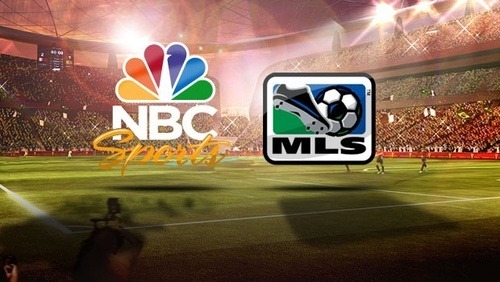
The MLS has done a wonderful job of embracing technology. But the final frontier remains television, and without it, the league will continue to struggle.
As the ratings for NBC’s Major League Soccer programming roll in, perhaps the only way to characterize the partnership’s early days is as a disappointment. Television remains a tough nut to crack, especially for U.S. soccer.
It’s a problem that’s emerged rapidly in the last decade: other nations like England, Spain and Italy provide hours of soccer coverage each day, and still have trouble keeping up with demand. There’s SKY, Setenta, beIn Sport and BT Sport, to name a few, all of which skyrocketed in popularity with the ‘90s-era rebrandng of the English Premier League. Highlight shows and 24-hour soccer news is wrapped around the match broadcasts, bringing in billions of dollars in these major markets.
Yet as professional soccer expanded beyond its original borders, its broadcasting sources failed to keep up. And so fans in the U.S., Southeast Asia, Africa and South America have instead turned to the internet to fill the void. Despite legacy broadcasting companies’ efforts to shut down illegal streams and online television channels, the internet has become a refuge for those eager for greater access to the sport. Media outlets, blogs and even the clubs themselves have in turn rushed to feed that hunger online.
MLS has been on the forefront of this “alternative screen” movement. It’s repeatedly proved able to adapt and creatively market its product through different channels, and created an effective platform online by embracing the internet’s capabilities. While the Barclays’ Premier League polices YouTube, pulling down any copyrighted material, the MLS has gone the other way and offered its own HD-quality highlights for every match. It followed that with a mobile app, and developed it into what is likely one of the best of all the leagues in the world.
But the ultimate goal is still television, with its promise of the kind of mass audience enjoyed by the NFL or NBA. And there, MLS has had significantly more trouble. Prior to its deal with NBC, the sport didn’t even have a home. ESPN halfheartedly broadcast a “game of the week” that rated high in production value but lacked the support of the pregame and postgame shows that have become part of the fabric of other sports programming. Add to it that ESPN often put MLS games up against ratings giants like American Idol, and it’s unsurprising that the league never gained much traction.
With NBC, at least, there is hope. It’s similarly gone all-in on the internet, providing free streams of every Barclays Premier League game. And it is committed to producing MLS programming in a way that ESPN or even Fox Soccer never managed to do. Its “MLS Insider” show packages highlights and news with quality production, providing coverage that goes deeper than simply airing matches. Consequently, it’s managed to generate storylines around the sport. Recent shows have profiled talented young players like Diego Fagundez, reported on Eddie Johnson’s troubled past and featured promising coaches like the New York Red Bulls’ Mike Petke.
Doing that is important in creating an identity that the league might be able to further develop. But that depends on whether people are watching in the first place. As MLS mulls further expansion, it needs to to support itself through better television ratings.
What can MLS do to ensure that its visibility improves? For a start, it should increase the salary cap and invest a significantly larger portion of revenues in attracting star players. Clint Dempsey is a great presence in Seattle, but the league needs more big names to offset falling attendance in major markets like D.C., Los Angeles and Houston. Already fluent on the internet and finally supported by a strong television lineup, it seems the MLS only needs that next big story to propel it into the general consciousness.
–
Zach Ricchiuti is a contributor and resident soccer expert for Began in '96.
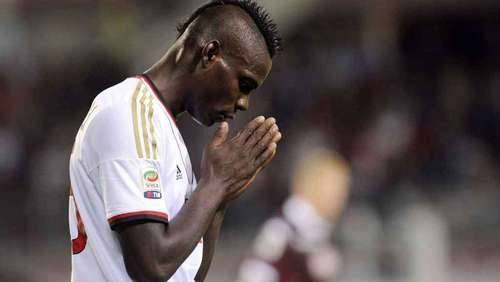
Just how crazy can Italian soccer get?
Calcio.
Derived from the verb calciare, or “to kick,” calcio is the Italian word for football or soccer. And like food, wine and women, Italians tend to think their version of calcio is both much different and much better than the rest.
In reality, soccer in Italy has suffered in recent years. Yet there is no denying that, for better or worse, Italian footballers are dedicated to doing things their own way. While the rest of Europe measures itself through shirt sales, marketing figures and global reach, Italy is defined by corruption and truly insane owners.
Just last year, for example, Palermo owner Maurizio Zamperini fired his club’s coach and sporting director. That’s the normal part. Here’s what followed: the firing and hiring of five coaches during the season, two of whom were fired and then re-hired in the same year. Zamperini would finally settle on Giuseppe Sannino, who just so happened to be his original choice. But by then it was too late. The club had been relegated to a lower league.
Zamperini’s indecisiveness pales, however, in the face of Luca De Pra’s dedication. The Genoa youth coach was in the midst of preparing for a crosstown derby versus Sampdoria when he decided he needed a bit more intel on his squad’s rival. So he equipped himself head-to-toe in camouflage and spy gear and camped in the trees near Sampdoria’s training ground.
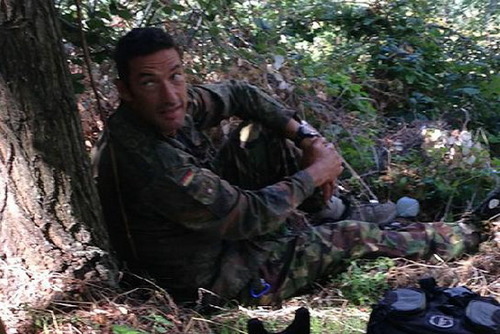
Fans attending the practices quickly noticed a man in full Navy Seal-like gear hiding in the trees, and alerted club officials. Sampdoria’s training staff captured De Pra and, after what we assume was hours of interrogation, released the coach. Intent on beating Genoa at its own game, Sampdoria’s press office released a statement on the incident:
“That the derby is a question of nerve, tactics and strategy we already knew, but frankly we could never expect that it could turn into a scene of espionage.
Like Rambo hidden among the branches on the hill, Luca De Pra, Genoa goalkeeping coach and man of noble footballing ancestry, failed to overcome Sampdoria’s intelligence and counter intelligence operations.
However, no prisoners were taken, and no blood was shed. Once tracked down and caught red-handed, the opposing side’s soldier was let free to return to base. You should always forgive your enemies, as nothing annoys them more.“
Much like the real spy world, Genoa denounced De Pra and maintained that he acted alone. Tossed out by the establishment, De Pra now faces a suspension. Just another day in Italian calcio.
The funny thing is that amid all the stories of espionage and owners gone mad, it’s easy to look past the quality of play shown by many teams. Juventus are finally looking like a side with a plan, Napoli keeps winning on the back of star Marek Hamsik, and the embodiment of Italian craziness, Mario Balotelli, has kept ailing AC Milan in contention. The battle for the title and Champions League spots looks to be one of the most exciting in Europe.
Discounting that because of all the off-pitch drama would be a shame, because like their food and wine, Italian fans and players take their calcio seriously. If only the people running the game there did as well.
–
Zach Ricchiuti is a contributor and resident soccer expert for Began in ‘96.
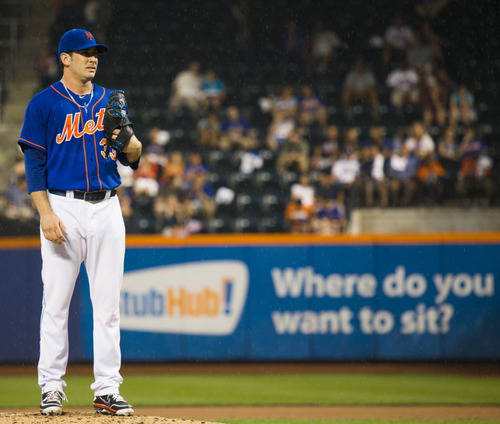
The Mets’ second-year starter is one of the toughest hurlers in the league, until he hits his 100th pitch of the night.
Matt Harvey has a problem.
The Mets’ ace has dominated so far in his young career, compiling a 12-8 record and 2.26 ERA over his first 33 starts. His 161 ERA+ and 10.6 strikeouts per nine innings put him in rare company as one of the better young pitchers in history and one of the best pitchers, period, in the game today. Harvey is a threat to throw a no-hitter every time he takes the mound.
But for all the well-deserved fanfare, the 24-year-old has yet to conquer one major obstacle: the 100-pitch threshold. For no matter how good Harvey is on any given night, crossing into triple digits is near guaranteed to turn him from unhittable to downright mediocre.
So far, the Mets righty has thrown a little more than 3,290 pitches in his MLB career. About 3,100 of those came before the 100th pitch of an outing. And for the most part, those pitches have turned out very well for him. Harvey’s allowed just one run for every 72 balls thrown prior to his 100th pitch.
Yet after that 100th pitch, his performance nosedives, and it takes just 17 pitches to allow one run.
Now, the sample size is small so far. Harvey’s thrown just 192 post-100 pitches in his career, and various factors go into a hitter coming around to score. But the difference is drastic nevertheless.
Post-100 pitches this season, Harvey has faced 44 batters. They’re hitting .400, with a .533 slugging percentage and only seven strikeouts. To put that in context, fellow Cy Young contender Clayton Kershaw has faced 44 batters in that same situation and allowed just a .205 batting average against. Yu Darvish? Prior to yesterday’s near no-hitter, he’d seen 68, and they were hitting .156.
It’s not that Harvey struggles when he gets tired. That tends to happen to any athlete. It’s that he morphs into an almost completely different pitcher.
Those late-game issues have received little notice so far, largely because Harvey has been so unexpectedly great over his first 100 pitches. On a team that’s overachieved and yet still sits eight games below .500, any outing that keeps the Mets in the game past the sixth inning is considered a good one.
But as New York takes its next steps forward, they will increasingly need Harvey to finish out his starts on a strong note. He’s the ace, and therefore the de facto stopper. He’ll be relied on to throw effectively deep into games on those occasions the Mets desperately need a big win or some extra rest for their bullpen.
The Mets realize that, and appear to already be trying to improve Harvey’s late-game performance. Pitching coach Dan Warthen before Harvey’s Aug. 7 start against the Rockies challenged him to “pitch at 80% and try to get into the ninth inning with 90 pitches,” the New York Daily News’ Andy Martino reported.
Harvey responded with 8⅔ shutout innings, allowing just three hits. With one out to go, he released his 100th pitch of the game. Charlie Blackmon volleyed it right back at him, sending it screaming off Harvey’s knee cap and into right field. It was one of the hardest-hit balls he’d allowed all game, and his latest post-100 test.
Harvey returned to the mound. Six pitches later, he’d retired Troy Tulowitzki and hit 98 mph in the process. It was his first career complete game.
Whether that’s the turning point, we won’t know for a while. But it’s certainly a sign that Harvey and his coaches are working hard to string out his abilities over a longer period. At 24 and with less than a full year under his belt, he’s got plenty of time to fix the flaw preventing an already-great pitcher from becoming a perennial Cy Young candidate.
As far as problems go, that’s not a bad one.
–
Joe Schackman is an editor and co-founder of Began in ‘96.

The U.S. demonstrated just how deep this squad is during their run to the Gold Cup title.
The Gold Cup played out just about how everyone expected.
The U.S. beat a talented, well-organized Panama side 1-0 in the final, confirming that the Americans remain the best of the group, but that the group nevertheless still lacks in quality. Fans got an entertaining diversion during a period otherwise devoid of important soccer. And manager Jurgen Klinsmann seized on the opportunity to demonstrate just how far the national program has come under his tutelage.
The reaction to the U.S. squad’s showing, though, seemed a bit more unsettled. Some saw brilliance during the three-week tourney, praising Klinsmann’s tactics, player selection and prescient substitutions (both Eddie Johnson and Brek Shea netted goals with their first touch). Others came off a bit more skeptical, reserving judgment for when the Americans face stiffer competition. More likely, as it often is, the truth is somewhere in the middle.
To his credit, Klinsmann navigated the U.S. “B” squad through the Gold Cup. The June World Cup qualifiers deprived him of a handful of key players, forcing the coach to plug those holes without much disruption. But calling this particular team the “B” squad is perhaps an insult to the talent assembled.
The U.S. fielded several players who make their living in European and Mexican leagues. All-time goals and assists leader Landon Donovan also made the trip, instantly elevating the national team above the likes of Mexico, Costa Rica and Honduras. Klinsmann’s main challenge here was not squeezing a great performance out of mediocre players, but selling all those players on his tactics and strategies well enough that he could throw them out on the pitch together and produce 90 minutes of cohesive play.
That interchangeability has quietly been months in the making. Klinsmann faced criticism early in his tenure for using a different squad in nearly 23 straight matches. Those teams were sloppy and inconsistent, often featuring players simply because they happened to be on the right continent at the right time.
Yet while those matches might have been frustrating to watch, they accomplished a larger goal of providing Klinsmann with perhaps the largest player pool in national team history. Now when the U.S. team trots out for tourneys, they benefit from the experience given early on to a wide range of then-unproven players.
There was Kyle Beckerman’s steady play as a pivot in the midfield, a testament to Klinsmann’s faith in him during a string of European friendlies. Brek Shea assimilated right back into the flow despite missing several first-team matches due to injury. Stuart Holden and DaMarcus Beasley turned in strong showings, and Landon Donovan used the Gold Cup to demonstrate why he could become the national team’s star. Even so, the U.S.’s vast roster means Donovan might find himself on the bench when the squad kicks off in Rio.
Thanks to the Gold Cup and Klinsmann’s long-term strategy, there will be serious competition in the defense, midfield and attacking positions when the “A” and “B” squads merge and vie for 23 final spots. Its the sort of dilemma every coach loves, and a luxury few American squads have enjoyed until now.
–
Zach Ricchiuti is a contributor and resident soccer expert for Began in ‘96.

The Yankees’ ace is missing his fastball, and getting hit hard as a result.
Once it starts to fade, a pitcher’s fastball can never be nursed back to full health.
Velocity for a Major Leaguer is the equivalent of an NFL receiver’s extra gear or an NBA guard’s quick first step: It’s what got him to where he is, and most likely will be what forces him out of the game when it falters and then disappears. In between, there is just a small window for figuring out how to adapt.
CC Sabathia sits firmly in that window. He is 32 years old with $76 million remaining on his contract, and is nevertheless far from the athlete who donned pinstripes nearly five years ago. Sabathia’s record so far is 9-8, with a 4.37 ERA and 92 ERA+, and for the first time in his career, looks absolutely nothing like an ace.
The simple reason for that is that his greatest weapon is losing steam. Sabathia once boasted a high-90s heater that exploded from the left arm attached to his massive frame. But a closer look at his performance of late reveals a decline in his fastball as significant as it was sudden.
Sabathia’s signature pitch has averaged 93.2 miles per hour since 2007, when these velocity statistics first became available. His single-season peak was 94.1 mph in 2009. He could ramp it up too when needed, hitting at least 97 in every season from 2007-‘11.
That’s not so this year. Sabathia’s average fastball velocity is just 90.9 mph, and he has yet to touch even 95 on any single pitch so far in 2013.
Now, that wouldn’t matter much if those low-90s fastballs were still zipping by hitters. But already this year, opponents have blasted 23 home runs, more than half coming off of his fastballs. That’s a career high, and there are still three months left in the season. Factor in all the hits Sabathia’s given up, and batters are hitting .291 versus fastballs alone.
The slowdown is creating a domino effect for the other pitches in his arsenal. Sabathia’s changeup, which relies on a hitter’s fear of the fastball, has yielded nearly as many home runs and doubles as ever before. Opponents hit .282 when a changeup crosses the plate, .100 points better than in 2012.
The end result is that hitters are making making contact more, hitting the ball harder and sending it much further than normal. That’s a trifecta of bad signs for any power pitcher.
It’s also not unusual, even for a perennial Cy Young candidate like Sabathia. Athletes deteriorate, skills diminish and eventually age wins out. But that’s little consolation for the Yankees, who likely didn’t expect Sabathia to hit his decline so soon, and at a time when there are few other options to pitch the big games.
Ace-in-waiting Michael Pineda has sat on the sidelines with a shoulder injury almost since New York acquired him. The Yankees have shown little ability for developing front-line starters of their own, and a 2014 free agency pool headlined by the likes of Matt Garza and Ervin Santana is thin, to say the least.
That means their best bet also requires the most work. Sabathia is far from done as a useful starter, but he’ll likely need to reinvent himself to maintain his effectiveness. That often includes better developing the rest of his pitches, and becoming more cerebral in the way he attacks hitters.
It’s a roadmap that players like Pedro Martinez and Roy Oswalt followed to late-career success. The downside is that that same path is littered with the remains of countless careers sunk by fading fastballs.
–
Joe Schackman is an editor and co-founder of Began in '96.
Casa en el campo
I am fully at home in the field.
Dirty, crawling on my knees, practicing the ancient simplicity of harvesting food from plants. I am most alive when I am near the soil, hands working diligently to make the perfect bunch, chatting in Spanish with the migrant farmworkers who have become my close friends.
My face stays shaded by the brim of my hat. A flannel shirt protects my arms from the beating sun on a 98 degree day in Oregon summer (at least 105 inside the greenhouse tunnels). Sweat and dust glisten on my skin. Calloused hands blackened by many hours of picking tomatoes from their trellised vines. A big ole’ goofy smile on my face. Nos reimos mucho.
Thoughts still float in the back of my head: Perhaps I romanticize and glorify a life that mis compañeras likely did not choose. Is it my privilege that leads me to desire an occupation which most of society looks down upon with pity? Why do I feel so intensely drawn to a lifestyle which my friends and coworkers cannot escape (yet I can move freely in and out of)?
Why does the land call me so loudly & clearly? It is telling me that I need to change these deeply engrained agricultural systems and labor practices of food production in this modern world. Harvesting alongside some of the hardest working people in America (who are among the most oppressed) has taught me so much about farming, society, language, culture, and life.
—
Taking the long way home from the farm, nostalgia approaches quietly along the curved country roads. In the core of my stomach, I can already feel the way I’ll miss this season. I get the feeling that I’ve finally found my little pocket of the world with the sweetest, most wonderful friends & community I could have asked for. This season has been absolutely life changing. I am growing unendingly, flowering profusely with new insights and passions.
Mi cabeza is lleno de la granja. I remember the smokey grey hanging low and thick in wildfire July; we all duck into a greenhouse to make bouquet-like manojos de albahaca. We start a game to practice our respective new languages. I ask Margo: “¿Cómo se dice cebolla en inglés?” She giggles and thinks for a moment before proclaiming “Onion!” We all smile and continue the unique cultural exchange of women of so many backgrounds.
These conversations dance in my mind. Basil lingers on my hands.
Ah, sweet memories and new farming experiences to come!
Casa en el campo
I am fully at home in the field.
Dirty, crawling on my knees, practicing the ancient simplicity of harvesting food from plants. I am most alive when I am near the soil, hands working diligently to make the perfect bunch, chatting in Spanish with the migrant farmworkers who have become my close friends.
My face stays shaded by the brim of my hat. A flannel shirt protects my arms from the beating sun on a 98 degree day in Oregon summer (at least 105 inside the greenhouse tunnels). Sweat and dust glisten on my skin. Calloused hands blackened by many hours of picking tomatoes from their trellised vines. A big ole’ goofy smile on my face. Nos reimos mucho.
Thoughts still float in the back of my head: Perhaps I romanticize and glorify a life that mis compañeras likely did not choose. Is it my privilege that leads me to desire an occupation which most of society looks down upon with pity? Why do I feel so intensely drawn to a lifestyle which my friends and coworkers cannot escape (yet I can move freely in and out of)?
Why does the land call me so loudly & clearly? It is telling me that I need to change these deeply engrained agricultural systems and labor practices of food production in this modern world. Harvesting alongside some of the hardest working people in America (who are among the most oppressed) has taught me so much about farming, society, language, culture, and life.
—
Taking the long way home from the farm, nostalgia approaches quietly along the curved country roads. In the core of my stomach, I can already feel the way I’ll miss this season. I get the feeling that I’ve finally found my little pocket of the world with the sweetest, most wonderful friends & community I could have asked for. This season has been absolutely life changing. I am growing unendingly, flowering profusely with new insights and passions.
Mi cabeza is lleno de la granja. I remember the smokey grey hanging low and thick in wildfire July; we all duck into a greenhouse to make bouquet-like manojos de albahaca. We start a game to practice our respective new languages. I ask Margo: “¿Cómo se dice cebolla en inglés?” She giggles and thinks for a moment before proclaiming “Onion!” We all smile and continue the unique cultural exchange of women of so many backgrounds.
These conversations dance in my mind. Basil lingers on my hands.
Shattered perspective
.
.
.
#glass #frame #woodenframe #framed #brokenglass #shattered #shatteredglass #brokenwindow #windowshots #mirrorimage #mirrorpicture #outdoordesign #outdoorart #outdoorphotography #outdoorstyle #foggyday #fogg #perspective_in_focus #perspectives #brokenhearts #brokendreams #darkphotography #darkshots #darkside #darks #darkstyle #darkmood #artphotos #artphoto #picoftheday
https://www.instagram.com/oscattus/p/BpVXELbnLT7/?utm_source=ig_tumblr_share&igshid=sf1xe8pozq8s
Post link
Christian Scott aTunde Adjuah - Perspectives (Stretch Music, 2015)
Personnel:
Christian Scott aTunde Adjuah – trumpet, sirenette and reverse flugelhorn
Elena Pinderhughes – flute
Braxton Cook – alto, straight alto
Corey King – trombone
Cliff Hines – guitar
Lawrence Fields – piano
Kris Funn – bass
Corey Fonville – drums, SPD-SX pad

In the Field with Anthony Ma (Executive Director, Taiwanese American Film Festival)
Interviewed by Lara Santos, Field Reporter
Lara Santos (LS): When’d you start your work doing the work that you do?
Anthony Ma (AM): I was in advanced drama in high school and during my junior year, my teacher cancelled a play and we were left without anything to do for 2 months. We were 20 actors just sitting there so I was like you know what, I’m gunna write a script, so maybe we can do a movie instead of a play and we did it. And from then on, I got hooked and continued writing and making films.
LS: What were the influences in making your work come to life? Are there businesses, people, orgs, celebrities you admire or want to work alongside?
AM: I wanted to be an actor ever since I saw Jim Carrey when I was 5 years old. That’s when I was like I’m gunna be an actor for sure and started entertaining my friends around me. Once I saw Brokeback Mountain by Ang Lee, I was like woahhhyou can really use films to inspire and not just entertain. It was Ang Lee that really showed me how important film can be and how to cultivate my voice in telling a story through film.
LS: Where do you see your relationship to AAPI communities in the years to come?
AM: I hope that I can be an influence for actors and even filmmakers. I really enjoyed cultural film festivals when I was a new filmmaker; it instilled confidence in me to tell my stories and created a platform where a community could inspire together. Especially now I feel like a door has opened where diversity is such a hot topic and its the perfect time where this community can really take advantage. Everyone’s been trying to get a bite of the cake, so it’s really important now to share our own stories. So hopefully I can be one of these voices that continues to help open more doors.
LS: What do you hope the impact of your work to be?
AM: For a kid later on to see someone like me onscreen and be like hey I can do that too because when I was growing up in Arcadia, I would always say I wanna be an actor, I wanna be an actor and my aunts and uncles would always be like oh okay and take it with a grain of salt, and it’d always sorta hurt, but that’s because they’ve never seen an Asian person onscreen show that it could be possible. I hope that I can help change that perspective in the future.
LS: Anything you want to add?
AM: This Taiwanese American Film Festival is really special to me because as I was growing up as a young Asian American kid, everyone would ask me what are you and I’d say oh I’m Chinese, but as a child I would go back to Taiwan often and that was the culture that stuck with me. After creating this film festival watching all these Taiwanese films, it reminded me that there is a very diverse Taiwanese culture that deserves its own spotlight as well and it only adds to the amazing Asian American art form that we have and it just shows that there are so many of us with stories that have yet to be told and familiarized.
TheTaiwanese American Film Festival is this Saturday, July 8th at the Downtown Independent. Buy your tickets today: http://bit.ly/2tiYiy3
Share what you do. http://bit.ly/ADEsubmit.



